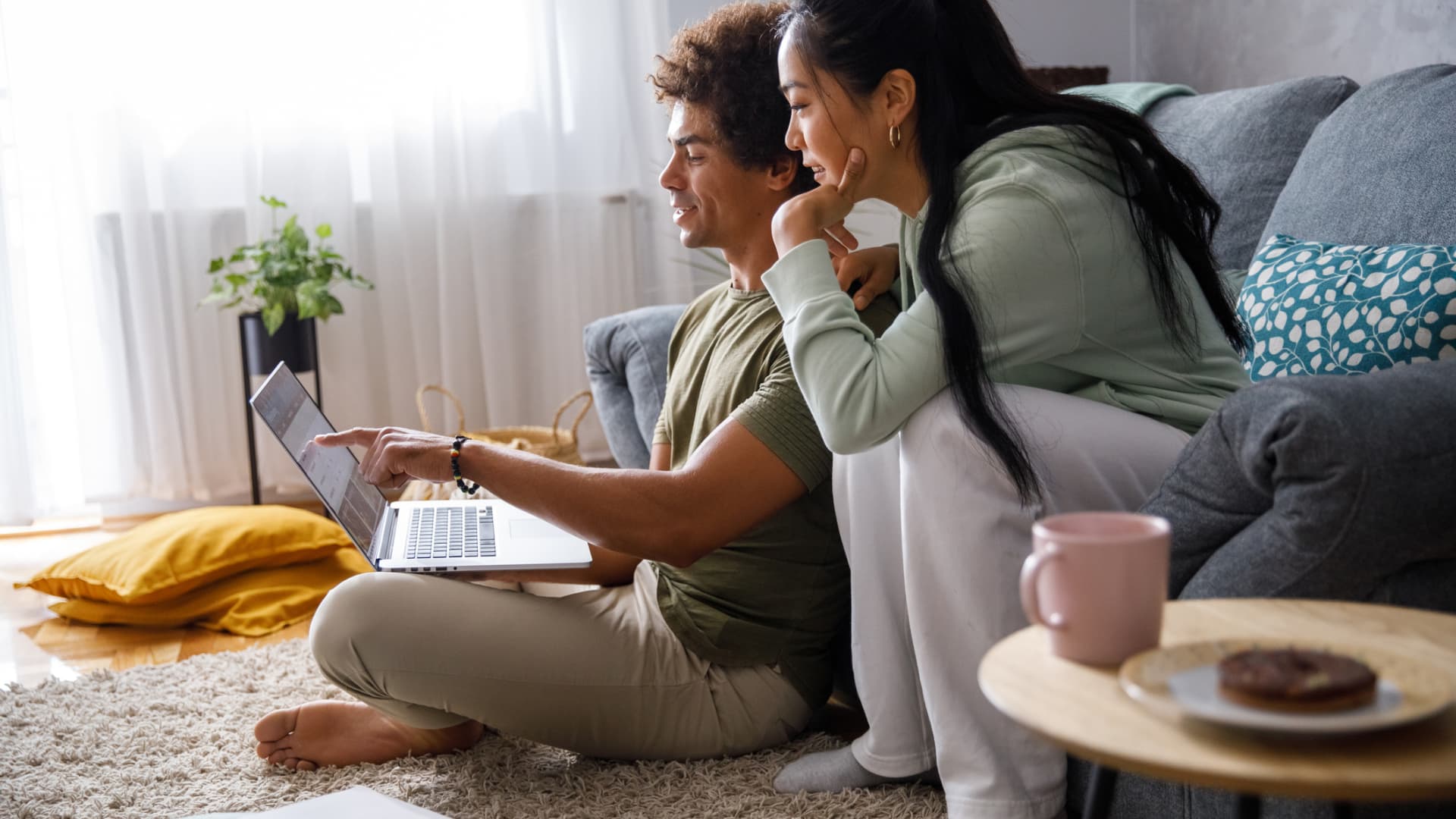TikTok‘s latest financial trend, “loud budgeting,” can be as simple as saying “Hey, I don’t want to spend money right now,” Lukas Battle explained on CNBC’s “Power Lunch.”
The concept encourages consumers to take control of their finances and be vocal about making money-conscious decisions, rather than modeling purchase behaviors after celebrities and their bottomless pockets — and financial experts love it.
Battle, a comedian and writer who first coined the term loud budgeting, said his idea has been largely met with relief, which is why it has proved popular.
“There’s a lot of pressure to spend especially when you are seeing so many products being advertised to you all the time or lifestyles that aren’t very attainable,” he said.
More from Personal Finance:
The ‘mob wife’ trend is easier on the wallet
Stylist Allison Bornstein: Forget quiet luxury
What to know before taking advice from TikTok
Just months ago, we were coveting Gwyneth Paltrow’s “quiet luxury” courtroom style with $1,450 black Prada boots and a $300 Smythson notebook while justifying such expensive purchases using “girl math.”
Alternatively, “loud budgeting'” is centered around the everyday person, or the “average Joe,” according to Battle’s viral TikTok video.
“Let’s send a message to corporations about the national inflation level. Let’s take a stand,” Battle said in the video.
“It’s not ‘I don’t have enough,’ it’s ‘I don’t want to spend,'” Battle added.
In fact, the truly ultrarich are less interested in conspicuous consumption, he contends. In that way, loud budgeting is “it’s almost more chic, more stylish, more of a flex.”
Financial experts love loud budgeting
“Being loud can be empowering,” Erica Sandberg, personal finance expert at CardRates.com, recently told CNBC.com. “With this process, you become proud that you bring a bag lunch, make your own coffee, or take the bus.”
Further, being open about your financial constraints can also help reduce anxiety and crowdsource solutions, she added.
“Not only can consumers find commonality with budgeting concerns, they can also find community to achieve broader goals and cut down on impulse purchases,” Sandberg said.
Although most Americans say they are living paycheck to paycheck, consumers routinely spend more than they can afford on impulse purchases, many studies show — particularly on sites like TikTok, Instagram and Facebook.
One report by online lender SoFi found that 56% of consumers said that more than half of their online purchases are spontaneous, driven largely by changing habits post-Covid and the surge in online shopping.
There are a growing number of catchy phrases, such as “bougie broke” and “de-influencing,” which all aim to consciously stop overspending on social media and start saving.
“When opening Instagram and routinely seeing photos of that friend who travels to Europe every month, or near daily dinners in $100 per person downtown restaurants, it can become easy to feel that doing the opposite, putting more into savings for a single annual vacation, isn’t really ‘living,'” said Yuval Shuminer, CEO of budgeting app Piere.
Yet, Battle is spot-on, Shuminer said.
“Deprivation isn’t the goal or the outcome,” she said. “It’s the creation of a lifestyle that creates real individual value. It’s about spending money and allocating resources on what you prioritize in life, and cutting ruthlessly on what you don’t.”
How you can jump on the loud budgeting trend
Quiet the noise altogether, consumer savings expert Andrea Woroch recently told CNBC.
“The most simple way to dodge temptations is to get off the list by unsubscribing from emails, opting out of text alerts, turning off push notifications in retail apps and unfollowing brands on social,” she said.
In addition, deleting payment details stored online helps create a “purchase hurdle” that forces you to think through your buying decisions, Woroch said.
Otherwise, Jacqueline Howard, head of money wellness at Ally, recommends trying “the 48-hour rule,” which requires waiting a full two days before making a purchase, even if it’s on sale.
“This small window of time allows you to calm your emotions from the urgency of the sale and helps you decide if you really want or need the item,” she said.
